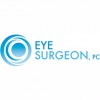Your vision is critically important to you. Dr. Julia Katz and her staff are dedicated to providing you with the quality of care you expect in a major metropolitan city like New York, yet with a personal care and warmth not easily found. Julia Katz, MD is a board-certified attending physician in ophthalmology at the Manhattan Eye, Ear & Throat Hospital.
Dr. Katz completed her residency in ophthalmology at the Manhattan Eye, Ear & Throat Hospital, where she served as Chief Resident in her final year. She continued her training at Manhattan Eye & Ear by completing a fellowship in cataract and refractive surgery. Katz graduated from Yale University, where she received a Bachelor of Arts in American History.
She earned her M.D. with honors from New York University. Katz also completed a residency in Internal Medicine at The New York Hospital/Cornell University Medical Center. Katz prides herself on devoting the time and personal attention it takes to best evaluate and treat each patient. Our office features state-of-the-art diagnostic equipment including Optos fundus photography, Cirrus HD-OCT posterior segment imaging, Humphrey visual field analysis and IOL-Master optical biometry.
Dr. Katz completed her residency in ophthalmology at the Manhattan Eye, Ear & Throat Hospital, where she served as Chief Resident in her final year. She continued her training at Manhattan Eye & Ear by completing a fellowship in cataract and refractive surgery. Katz graduated from Yale University, where she received a Bachelor of Arts in American History.
She earned her M.D. with honors from New York University. Katz also completed a residency in Internal Medicine at The New York Hospital/Cornell University Medical Center. Katz prides herself on devoting the time and personal attention it takes to best evaluate and treat each patient. Our office features state-of-the-art diagnostic equipment including Optos fundus photography, Cirrus HD-OCT posterior segment imaging, Humphrey visual field analysis and IOL-Master optical biometry.
Services
Comprehensive Eye Examination
Report
Regular eye examinations are invaluable in maintaining your eyes' health by both diagnosing and preventing disease as well as optimizing your visual potential.
During your comprehensive eye evaluation, Dr.
Katz will examine your eyes to detect diseases or other abnormalities that may not yet be causing symptoms.
Early detection is crucial in preventing vision loss from diseases such as glaucoma, which may not cause symptoms until significant and irreversible damage has taken place.
Routine checkups also help monitor control of systemic conditions such as hypertension and diabetes mellitus.
During your comprehensive eye evaluation, Dr.
Katz will examine your eyes to detect diseases or other abnormalities that may not yet be causing symptoms.
Early detection is crucial in preventing vision loss from diseases such as glaucoma, which may not cause symptoms until significant and irreversible damage has taken place.
Routine checkups also help monitor control of systemic conditions such as hypertension and diabetes mellitus.
Prescriptions & Contact Lens Fittings
Report
Seeing your best is important to you, and it's just as important to Dr. Katz.
She will take the necessary time to optimize your eyeglass prescription to suit all your visual needs.
Katz also has extensive experience fitting and prescribing contact lenses for all types of prescriptions.
If you've worn them for years but need updating or a change, or if wearing contact lenses is something you've considered but never tried, Dr.
Katz and her staff can findthe lenses that best fit your eyes as well as provide any necessary training on how to use them properly.
She will take the necessary time to optimize your eyeglass prescription to suit all your visual needs.
Katz also has extensive experience fitting and prescribing contact lenses for all types of prescriptions.
If you've worn them for years but need updating or a change, or if wearing contact lenses is something you've considered but never tried, Dr.
Katz and her staff can findthe lenses that best fit your eyes as well as provide any necessary training on how to use them properly.
Cataracts
Report
A cataract is a clouding of the eye's natural lens that blocks light rays from reaching the retina and results in a gradual blurring of vision.
Cataracts may cause difficulty with vision at both distance and near, as well as problems with glare and halos around lights.
Activities such as reading may become difficult, and driving - especially at night - could be hazardous.
A change in glasses prescription can often improve vision when the cataract is in its earlier stages, however with time glasses may no longer fully correct the vision.
Cataracts may cause difficulty with vision at both distance and near, as well as problems with glare and halos around lights.
Activities such as reading may become difficult, and driving - especially at night - could be hazardous.
A change in glasses prescription can often improve vision when the cataract is in its earlier stages, however with time glasses may no longer fully correct the vision.
Cataracts and Astigmatism
Report
The ideal surface of the cornea has a spherical curve, like the shape of a basketball, allowing light rays passing through it to bend toward its center and focus on one spot.
Corneal astigmatism is when the corneal surface is shaped more like a football, with flatter and steeper curves.
This common condition causes the light rays entering the eye to focus on more than one spot, causing a blur.
This blur can most often be corrected with spectacles or contact lenses.
If you have a cataract as well as corneal astigmatism, you may be a candidate for surgical correction of your astigmatism at the same time as your cataract surgery.
Corneal astigmatism is when the corneal surface is shaped more like a football, with flatter and steeper curves.
This common condition causes the light rays entering the eye to focus on more than one spot, causing a blur.
This blur can most often be corrected with spectacles or contact lenses.
If you have a cataract as well as corneal astigmatism, you may be a candidate for surgical correction of your astigmatism at the same time as your cataract surgery.
Cataract Surgery
Report
Cataract surgery can be considered when a cataract is affecting a person's quality of life and/or interfering with regular daily activities.
Surgery involves removing the cloudy lens (cataract) and replacing it with a clear, artificial lens.
Katz most commonly performs the "No-Stitch" procedure, which requires no needles, sutures or patches.
Eyedrops are used to anesthetize the eye.
Through a corneal incision that is less than 3.0mm, Dr.
Katz uses an ultrasound probe to break up and remove the cataract.
Surgery involves removing the cloudy lens (cataract) and replacing it with a clear, artificial lens.
Katz most commonly performs the "No-Stitch" procedure, which requires no needles, sutures or patches.
Eyedrops are used to anesthetize the eye.
Through a corneal incision that is less than 3.0mm, Dr.
Katz uses an ultrasound probe to break up and remove the cataract.
Reviews

Be the first to review Julia D. Katz, M.D.
Write a Review

